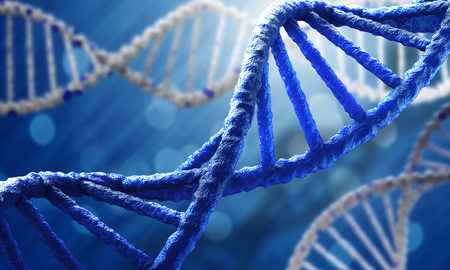Salk Institute Scientists Expand Stem Cell Abilities

In the laboratory, pluripotent stem cells have embryo-like abilities to develop into different types of tissues found in the human body. However, it is only totipotent stem cells that can develop into embryo-supporting tissues such as the placenta. Since extra-embryonic tissues play an important role in healthy growth and development, scientists at Salk Institute have been trying to discover how human stem cells can be prompted to generate extra-embryonic tissues in addition to embryonic tissues.
Salk Institute Scientists Expand Stem Cell Abilities
Working in collaboration with scientists from China’s Peking University, investigators at the Salk Institute in La Jolla, California, have reported discovering a cocktail of chemicals that can enable mouse and human stem cell cultures to generate extra-embryonic tissues in addition to embryonic tissues. The findings, described in the scientific journal Cell, provide new insights into development and tissue regeneration in mammals. It is hoped the technique will ultimately lead to better disease models and newer drug discoveries.
The scientists believe the new technique will be especially useful in developing models of developmental processes. This, in turn, will allow investigators to obtain a better understanding of diseases that affect placental function and embryo implantation. In time, the research may benefit patients undergoing in vitro fertilization.
Embryonic Development and Stem Cells
When the human embryo is developing, initially the fertilized egg has totipotent cells, i.e., stem cells with lineages that are both embryonic and extra-embryonic. However, as Professor Juan Carlos Izpisua Belmonte at Salk explains, capturing such totipotent stem cells with wide developmental potential has challenged stem cell biologists for decades. This is the first time a stable line of totipotent stem cells with bi-developmental potential has been reported.
Following fertilization, the mammalian egg undergoes division and formation of two groups of cell aggregates. One group develops into embryonic tissues and the other into tissues that support the embryo (such as the amniotic sac and placenta). This segregation occurs relatively early in the life of the embryo and researchers have been unable to capture and maintain stable lines of these totipotent stem cells. By the time the cells are collected, they have already matured into a particular tissue type.
Extended Pluripotent Stem Cells
The group at Salk has discovered a chemical cocktail that gives stability to stem cells before they become either type of tissue. These cells are termed extended pluripotent stem cells or EPSs. EPS cells provide scientists with an opportunity to study evolution, development, and organ generation in mammals due to their extended stability in a state of developmental potency, explains Jun Wu, co-author and senior scientist at Salk.
Chemical Cocktail for Expanded Stem Cell Abilities
The team first identified compounds that support stable pluripotent stem cells. A cocktail of one growth factor and four chemicals was found to maintain human pluripotent stem cells stable in a developmentally immature state. When the same chemical cocktail was applied to mouse stem cells, the scientists made a surprising discovery. The mouse stem cells could develop into both embryonic and extra-embryonic cell lineages. In addition, the chemically treated mouse stem cells had better abilities to form chimeras (a mixture of cells from two different species). Finally, in what is an unprecedented finding, a single mouse stem cell was sufficient to create all the tissues needed to make a whole adult mouse. Further experiments are underway in pigs who are physiologically more similar to humans. The ultimate goal is to develop human organs in pigs in light of the shortage of donor organs.
References:
- https://www.medicalnewstoday.com/releases/316847.php


